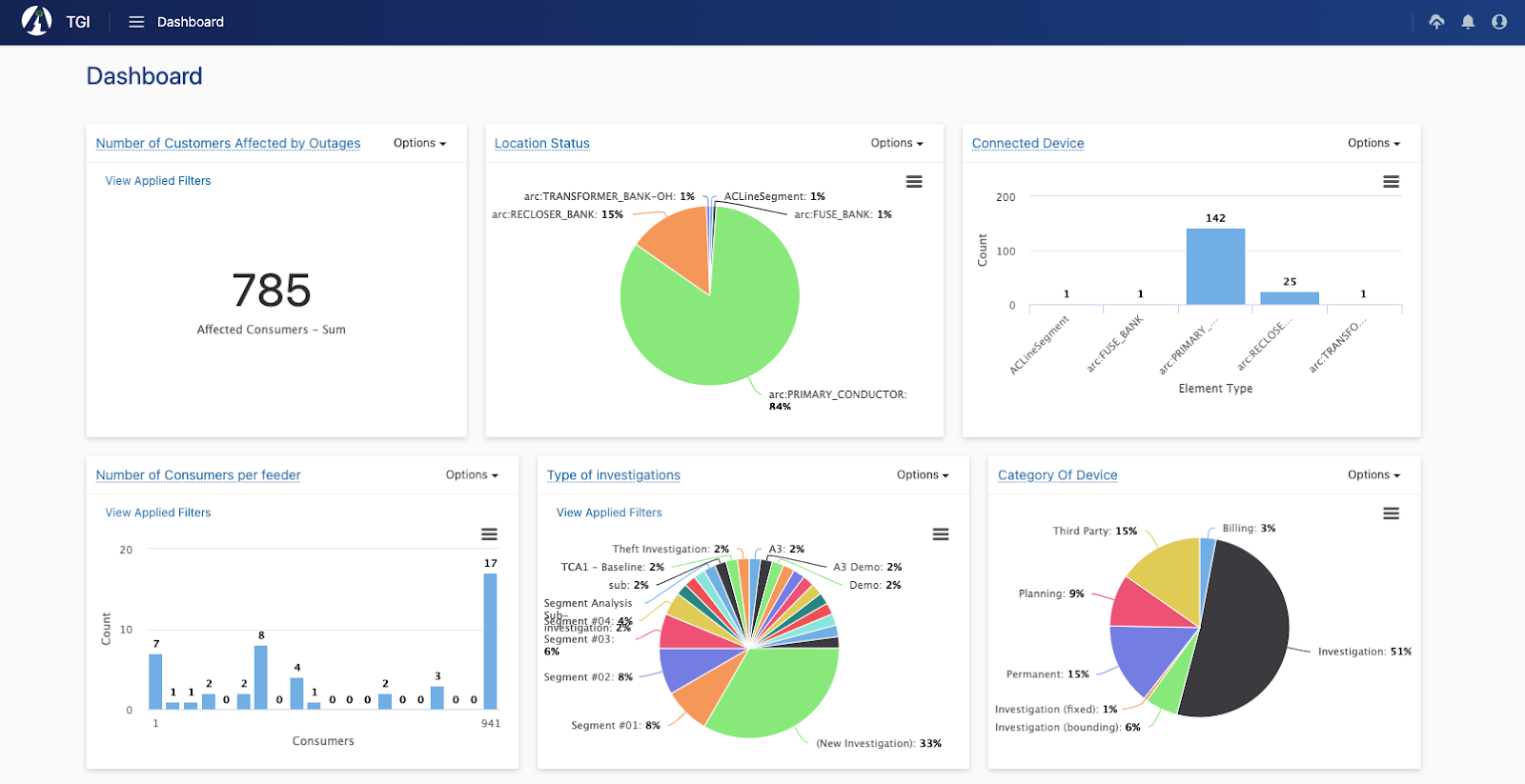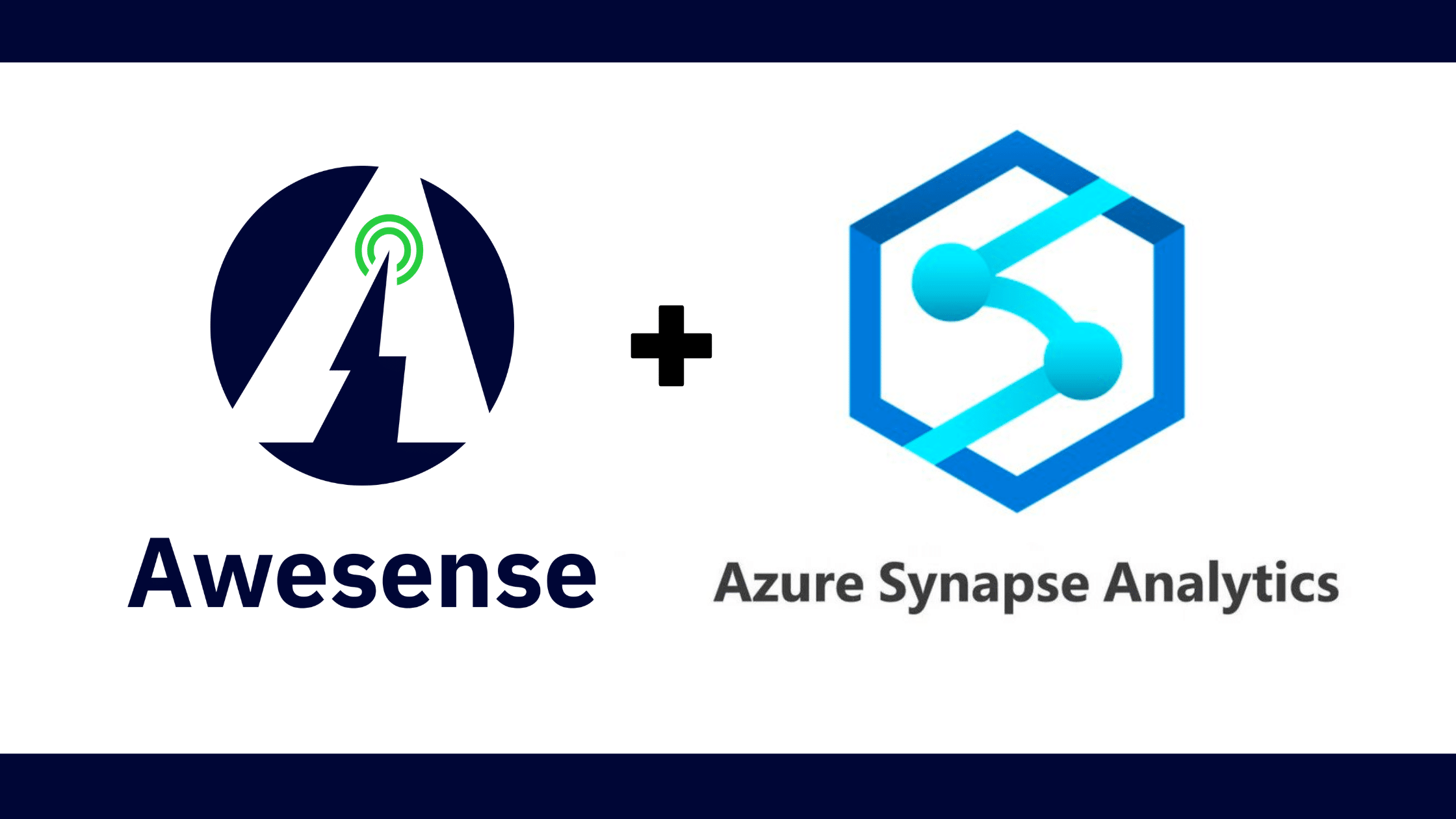Welcome to the second installment of the Learn to Build Better series. This multi-part series showcases the tools and techniques to rapidly build, test, and prototype energy-focused applications, analytics and use cases on the Awesense Energy Transition Platform, using the AI Data Engine to process data, and TGI or APIs to access and visualize the data structured according to the Awesense open Energy Data Model (EDM). In this episode, we focus on low and no code options for developers building energy data applications.
TGI’s Philosophy- Sharing is Caring
In case you were wondering, TGI stands for True Grid Intelligence. The front-end portion of The Energy Transition Platform is not to be confused with our backend Awesense VEE Engine.
Here at Awesense, we’re a family of data-heavy, technically-minded folk. But we are big fans of Low and No code tools and applications.
This new trend is democratizing the ability for anyone with a non-technical background to derive maximum benefit and value from our platform and its synchronized data. And for any technical folk like us, this trend means we can bring our platform to an even broader group of professionals to bring their ideas to life.
So what does that look like in practice? Low and No Code solutions mean a user interface that allows you to drag and drop or even select from a dropdown menu without writing a single line of code. With the Awesense Energy Transition Platform, we understand the needs of our clients, and we brought TGI Flexible Charting to life. TGI Flexible Charting allows for Low and No Code development- no coding background is needed! That is part of the TGI philosophy, offering our users a simple and easy-to-use platform to build analytical content to drive better decision-making. Look at some examples of the charts you can create quickly with TGI Flexible Charting:
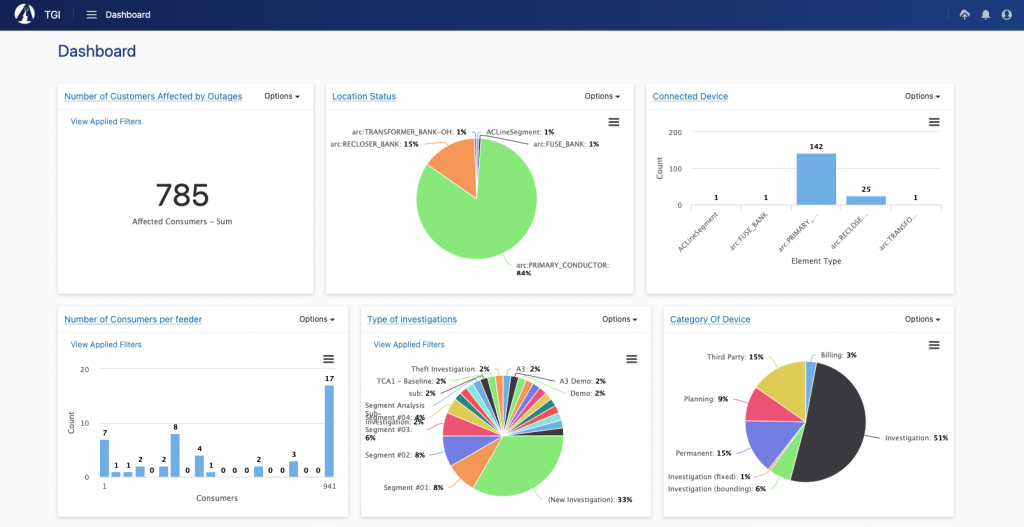
This is a view of the final dashboard created using TGI’s Flexible Charting Feature, all of which can be made without a single line of code.
TGI Flexible Charting
Now that you know our take on sharing and a positive user experience, we can understand TGI Flexible Charting much better.
What is it?
TGI Flexible Charting is simply the ability to build and create charts to display your data the way you want to see it. This means you can analyze, interpret, and explore the different ways you understand your system’s behaviour. All this is done in real-time, and switching between views is a single click away—all without needing to know how to code.
The TGI solution gives our customers access to out-of-the-box applications and analytics combined with the Awesense Energy Transition Platform to prepare for the future of energy, using data from smart meters, distributed energy resources (DERs), electric vehicles (EVs), and other data sources. That means that TGI’s Flexible Charting feature allows you to see all of this information in the best way for you. With TGI Flexible Charting, you never have to worry about installing or managing the tools for Low and No code development because it is native to the Awesense Energy Transition Platform. All of your data is already connected and available. And each tabular view throughout TGI can be utilized for the flexible charting of dashboards and reports and any of the extensive out-of-the-box applications.
Can I share?
So what can you do with it besides seeing your data in the best way that helps you understand it? You can create custom reports based on your dashboards and even share them with team members – you know we love sharing!
Who is this for?
We built the Awesense Energy Transition Platform so everyone can use data to their advantage. That means professionals interested in analytics but who don’t have development or coding skills are no longer restricted. If anything, it is designed for professionals who want to answer questions and make data-driven decisions quickly and confidently. No more trading one for the other because the data did not make sense or the right tool for building the analytics was not available.
TGI Flexible Charting In Action
It’s easy to read about these features and get lost in the information. Below are some examples of TGI Flexible Charting in action. Let’s take some general ideas and say that we want to show a subset of the IoT devices the platform is monitoring and what categories each of the devices fall into. We will use the Awesense Sandbox Environment dataset for this example (please contact us to gain access to the Awesense Sandbox Environment). We would do this on TGI’s Placement page within the platform:
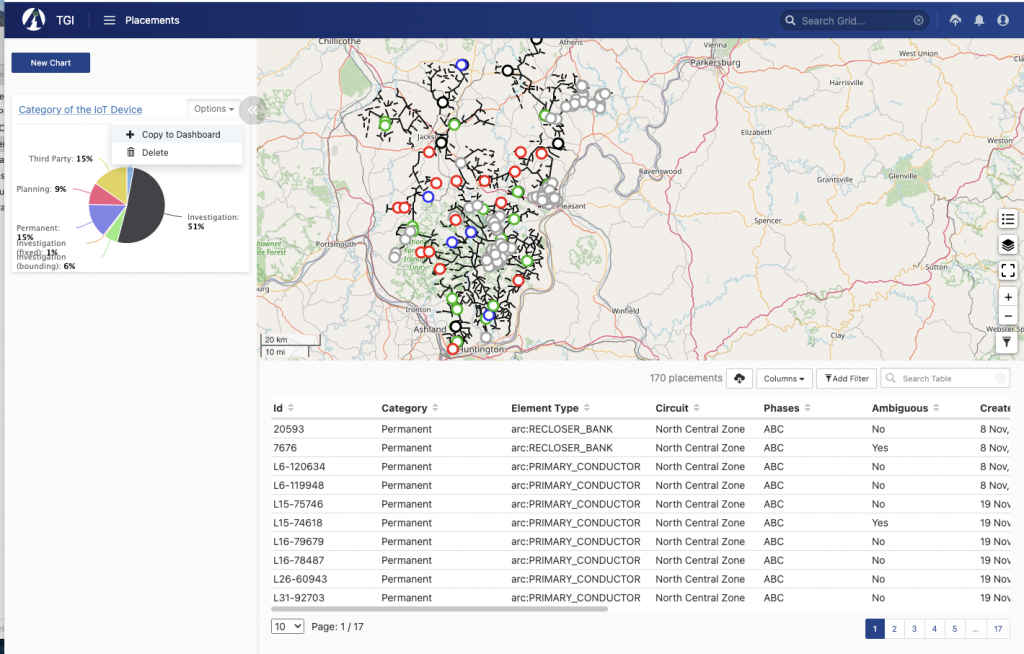
Creating this chart is simple; we just need to click the “New Chart” button:
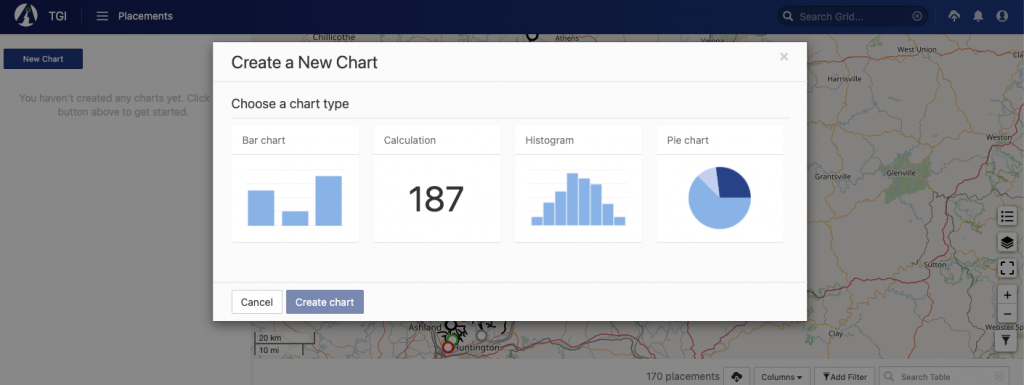
You can see four types of charts that can be created: Bar Charts, Calculations, Histograms, and Pie Charts. Let’s choose a Pie Chart. On the Pie Chart menu, choose what you want to see using dropdown menus.

The pie chart is then easily created on the page, from where it can be sent to the dashboard and displayed as a dashboard widget.
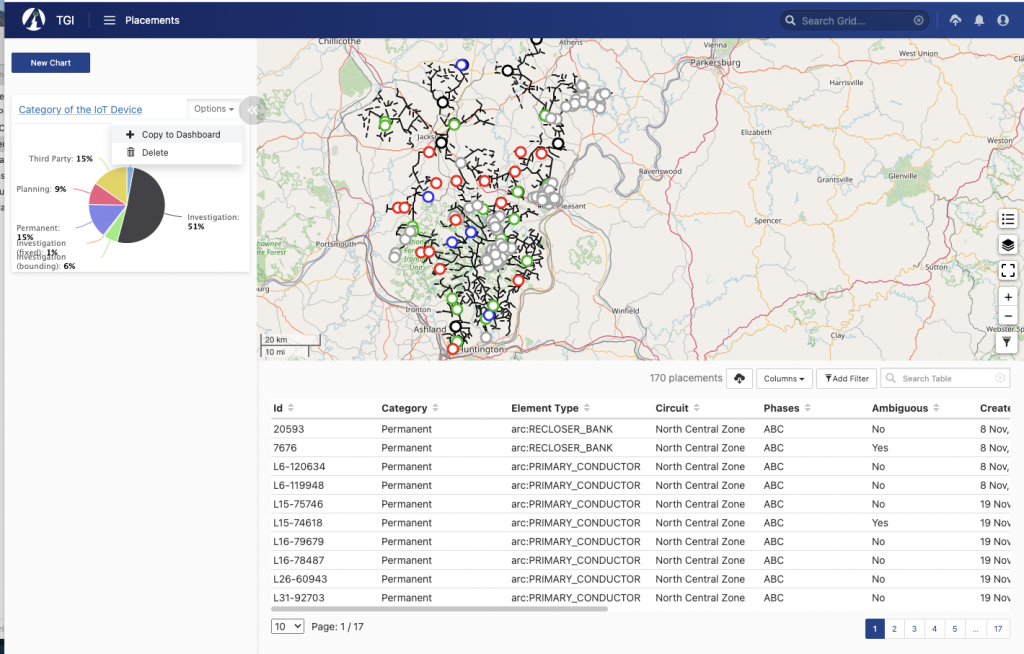
This way, users can use Low and No code techniques to create themed, live dashboards and reports, which can be easily shared across the organization. For example, here is a power quality monitoring dashboard we built for one of our clients.
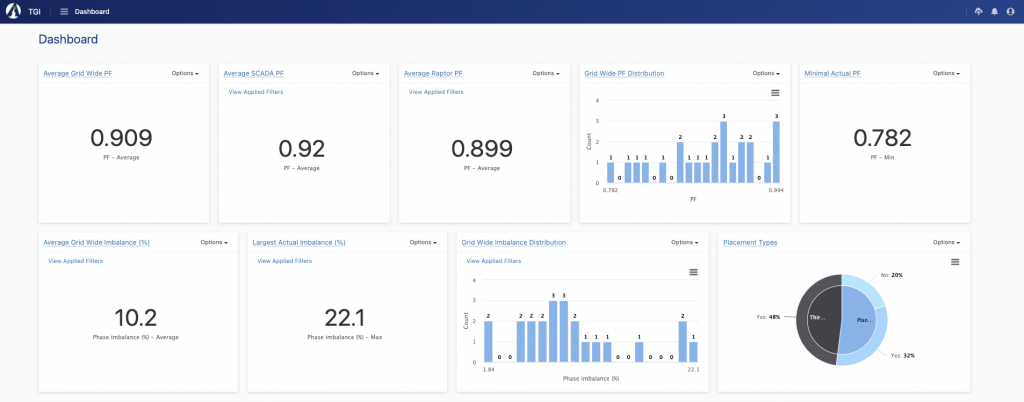
Other charts
In another example, users can look at all the active work orders in their service territory overlaid on a map.
A user may want to see the number of active work orders and create a calculation chart to display that. Next, the user may want to see which field technician each of these is assigned to and the priority of each. The user can toggle through interactively, choose to download the data in various formats and add the widgets to a dashboard.
Where to go next?
In the next episode of this series, we will discuss one of the most widely used analytics tools by organizations that work with us. Curious to know what that is? Well, stay tuned to find out!
We love connecting and would love for you to share our content! Follow along with this series and let us know what ideas YOU would like to see us write about. Let us know whether it’s more content about Low and No Code capabilities or a specific use case or tool you would like to know more about.
If you or your team are interested in building custom applications or use cases using the Awesense Energy Transition Platform, or you have an analytical tool we should demonstrate with our platform, feel free to reach out to us at tools@awesense.com.
Part 3 – The Energy Transition Platform: Learn to Build Better. Ep. 3 Spreadsheets
